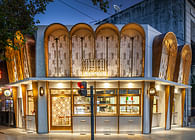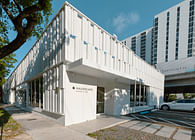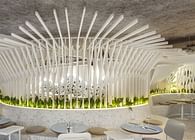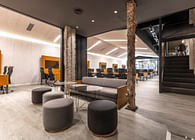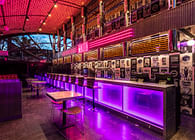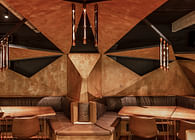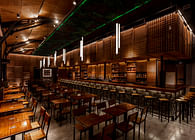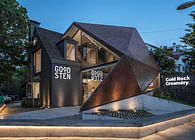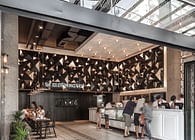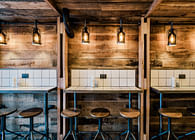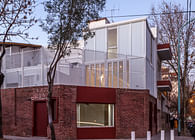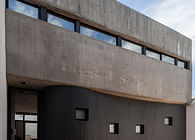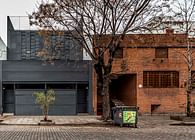
Buenos Aires
Construction was organized through a very specific set of needs from the owner. It had to be an
area with independent access within the house, one that that not only would solve the needs for
leisure and recreation, but that would also have the asset of functioning along with the garden
as a backing for those needs. This would result in a barbecue shed/playroom/office as well as
the guest rooms.
The organizational strategy was conceived and outlined by focusing on a sole object that would
be capable of solving the whole technological complexity by itself and from its location within the
lot so as to adjust to the functionality of the whole.
The morphology and placing of this piece is the result of a search for tensions applied to the
whole, assuming that the practically symmetric receptacle (the lot) required enhancing this
search through a strong intentionality.
This way the spaces provided by this piece become just a simple circulation of services on one of
its sides. Nevertheless, understanding the capacity of the object to host all programs in each one
of its cells manages to solve the relation with the whole through its other bifacial face, thus
providing the main void with a functional sense, as if it were a matter of vindicating the old
game of the kantihan paradigm.
Hence this object was constituted from the beginning under a constructive complexity that has
nothing to do with the outer shell. This element that resulted from a subtraction of solids ends
up hosting all the programs its provides the space with in each one of its cells, the rest being
just a void covered by a shell and joined by a palette of whites made of only three materials:
metal plates, OSB plaques, and masonry.
The chosen constructive system is grey isolating refractive brick, though which we have sought
an interpretation of different densities starting with choosing different blockings, rowing each of
its voids through concrete slabs, thus providing a different visual and constructive perspective to
the monochromatic receptacle of the whole.
The functional ubiquitousness of this piece is such that it not only serves from the totality of the
services, but it also connects the space vertically, containing a staircase in one of its cells. The
mezzanine is built from a light system and covered with phenolic plaques, and it solves the issue
of spaciousness without ceasing to be served by this piece , one which always expects to be the
protagonist by containing the space of the desk as well as an access to the semi-covered
expanse.
The technological solution of the outer shell solves the cover through a curve metal plaque,
which continues all the way until it completes the whole façade. The latter is operated through
superior openings that solve the inner illumination, and inferior openings with a technology that
allows them to unify space-wise the inside with the outside.
The monochromatic Choice of the outer shell (both in its inner as well as its outer side) as well
as the radicalization of the use of metal plaques that are continuous from its cover until the
totality of its façade, are a clear evidence of the respect shown for the ubiquitousness of this
piece. Its modest eagerness for absence is such that on its ground floor it clears the way for this
virtuous piece, as if it the functional balance of the whole depended solely on it—which is, by the
way, the correct interpretation of this project.
Status: Built
Location: Buenos Aires, AR
Additional Credits: Location:
Ciudad Autónoma de Buenos Aires
Project_ Documentation_ Construction Managers:
HM.Arquitectos _ Fernando Hitzig & Leonardo Militello
Collaborators:
Rubén Ruiz
Renders:
ZoomZ estudio
Construction:
Estudio hma
Structure consultant:
Carlos Gandini
Photography:
Masterpix.
Built Area: 150 m2
Site Area: 100 m2
Project Year: 2011




